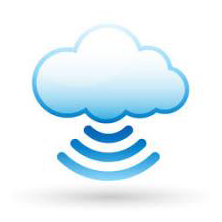Changing business conditions, newer threats, and a steep rise in the number of events, logs and alerts have made it imperative for organisations to rethink their IT strategies. Smart business architecture includes firewalls, intrusion prevention systems, intrusion detection systems, routers and many such devices that need to function efficiently to ensure network security. These devices generate considerable amounts of security-relevant data and event logs that need to be protected. IT organisations work round the clock, on premise as well as off-premise, to secure their information. Security Information and Event Management offers a new approach to security management by providing a holistic view of the business’s information technology security.SIEM combines the functionalities of security information management and security event management into one solution, ensuring data protection and making it easy for organisations to collect, correlate and act on the basis of that information. As IT environments continue to grow more complex, distributed, and difficult to manage and protect, SIEM becomes an indispensible for businesses by ensuring:
- Operations Support: As organisations continue to grow in size and number, the complexity in their IT environment also increases exponentially. They split their operations between various teams, like security operations centre (SOC), network operations centre (NOC), the desktop team, the server team, etc. Each of these teams have their own set of tools for monitoring or responding to various events, making it difficult to share information and collaborate in the event of a crisis. SIEM can help by pulling information from disparate systems onto a single platform, making cross-functional collaboration easy even in very large enterprises.
- Compliance: Most businesses are bound by regulations, and maintaining compliance is a difficult task. SIEM technologies can address such compliance needs directly as well as indirectly.
- Zero-Day Threat Detection: Nowadays, we discover new vulnerabilities and attack vendors every other day. AV solutions, firewalls, etc. look for malicious activities at different points within an IT infrastructure, from its perimeter to the various endpoints. Most of these solutions, however, do not have the capability of detecting zero-day attacks. An SIEM tool, however, is equipped to detect activities associated with such attacks instead of the attack itself.
- Protection Against Advanced Persistent Threats: APTs are sophisticated attacks targeting specific pieces of infrastructure or data, using a combination of methods, either simple or advanced, and attack vendors with a view to elude detection. Thus, many businesses are resorting to SIEM to implement a defence-in-depth strategy to protect their critical assets by using internal firewalls, network segmentation, two-factor authentication etc.
- Fast and Easy Forensic Investigations: Forensic investigations are usually long, drawn-out processes. Analysts must not only interpret data for determining the actual course of events, but also preserve the data in such a way that it is admissible in a court of law, when presented. SIEM technologies not only store and protect historical logs, but also provide tools that help in navigating and correlating data quickly and easily, thus allowing for thorough, fast and admissible forensic investigations.
Thus, SIEM helps organisation to improve their IT security, making it more effective and efficient by automating, integrating, and correlating information and processes within every system and across the IT environments. It ensures complete visibility of a company’s proactive risk analytics, and integrates its security and compliance procedures with other business operations.

Vijay Bharti is the Chief Information Security Officer (CISO) and Senior Vice President of Cyber Security practice at Happiest Minds Technologies. He brings in more than 20 years of experience in the area of IT Security across multiple domains like Identity and Access Management, Data Security, Cloud Security and Infrastructure Security.
His recent work includes building Security Operation Center frameworks (including people, processes and various SIEM technologies) where he is working on building an integrated view of security and ways of leveraging advance analytics and big data innovations for cyber security.







